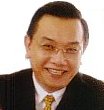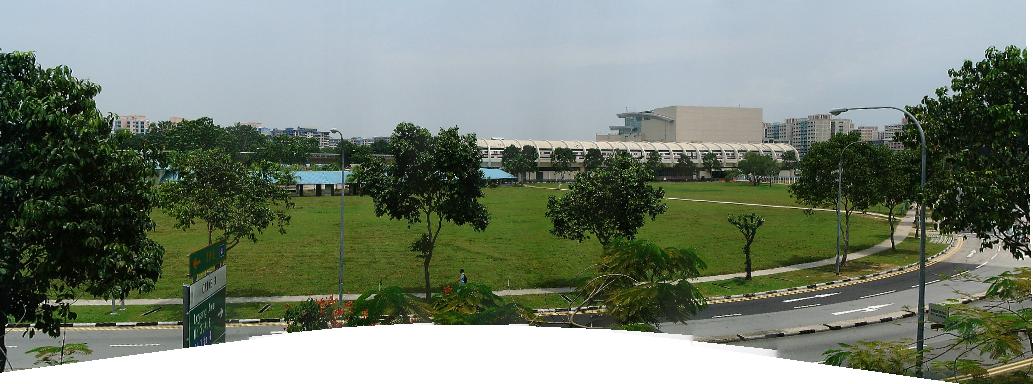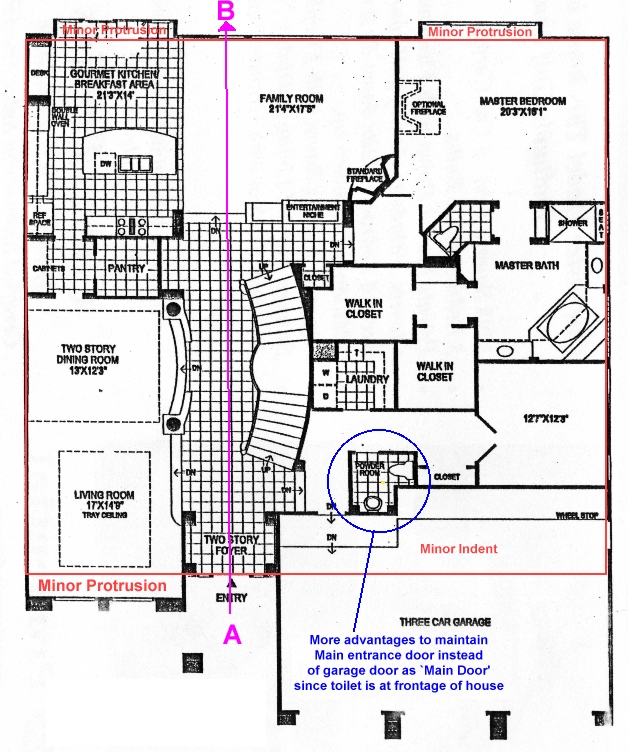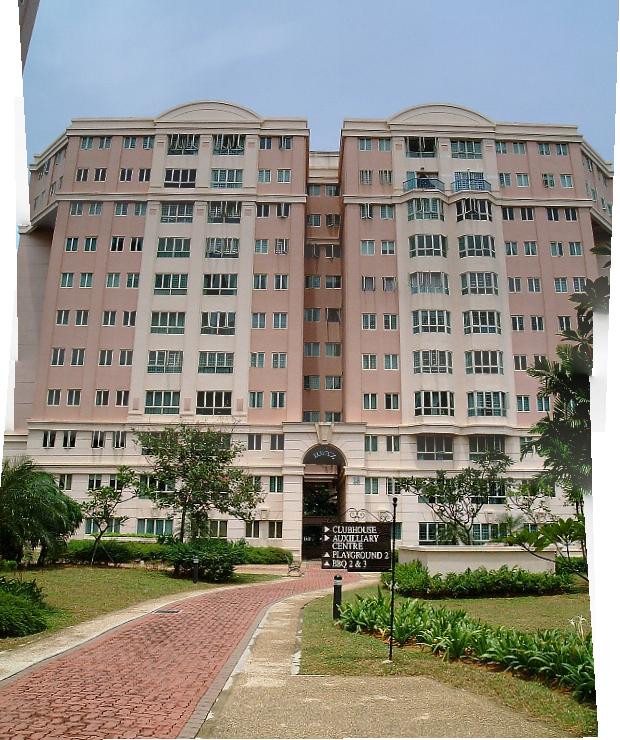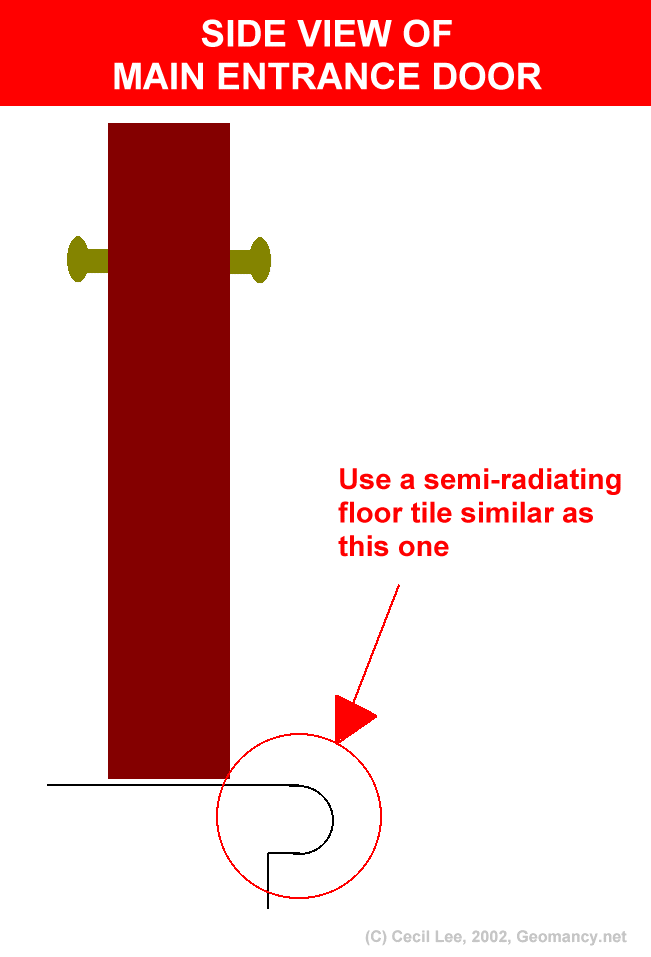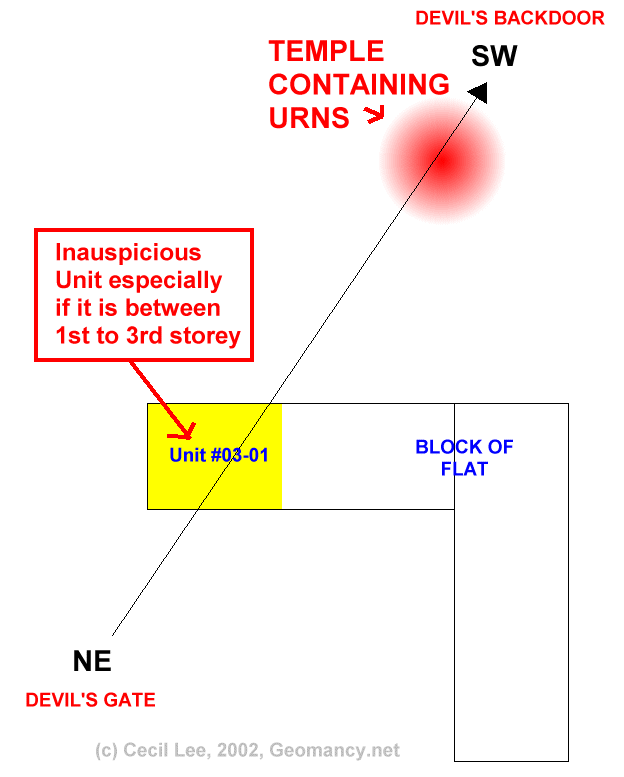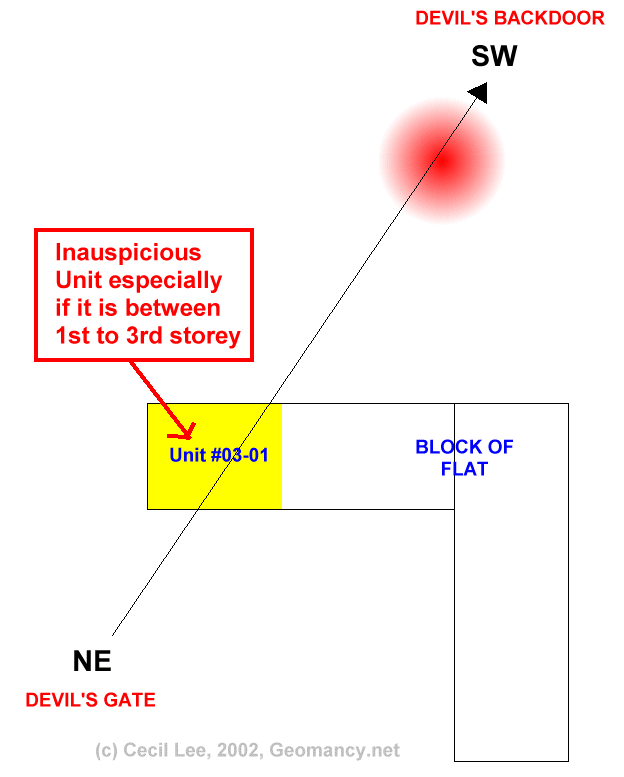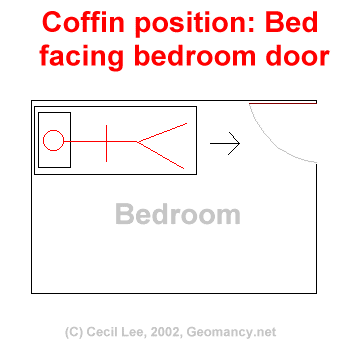-
Posts
38450 -
Joined
-
Last visited
-
Days Won
147
Content Type
Profiles
Forums
Blogs
Events
Gallery
Store
Articles
Everything posted by Cecil Lee
-
The Three popular figurines that come as a set are: Fu (Prosperity) Lu (Luck) Shou (Longevity Some pictures of each of these symbols are found here:- http://www.geomancy.net/mypictures/cgi-bin/mypictures.cgi?img=0&search=prosperity&cat=all&bool=and&x=12&y=14 The rationale for an inverted " Prosperity/wealth" is symbolic. Since Fu (prosperity is inverted) it implies that you are pouring wealth downwards. And since, some homes place this inside their main entrance: it literally means prosperity (wealth) is pouring down e.g. from heaven to earth. Warmest Regards, Cecil
-
Dear Anon, If you are applying the Eight House than, you have to use South West (the door to get into your apartment). I like to clarify that if you are using another theory i.e Flying Star and wanting to place water features or mountain support, it is best to use the frontage of the building. A good example is that under such a situation, if say metal elements are detected at the frontage of the building, it is a good candidate for a water feature. Since you do not `own' the exterior of the building, even when you apply Flying Star Feng Shui, best to use say South West or the interior of your home. Warmest Regards, Cecil
-
Dear Anon, 1. Further to what I had mentioned earlier, this Chinese sword made of coins should not be treated as every day decoration. 2. For example, it is common to say, find the figurines of Fu Lu Shou in many Chinese homes. Usually, 1 out of say 8 Chinese homes may have large or small of this three popular figurines displayed in the home. 3. But, in my opinion, it is extremely rare to find this Chinese sword coin in Chinese homes. Unless, it suddenly become highly commercialised as being able to bring in wealth. 4. Instead, as mentioned in the previous message, unless one's home is haunted or to clear out bad spirits or to ward of evil spirits. If these are not present in a home, there should normally be no specific reason why one must own one. It cannot forever, replace the popular handphone:) Warmest Regards, Cecil
-
Under the destructive cycle of Feng Shui, wood plant it's roots into the earth. In an environment with relatively flat buildings, in real life, and in a fertile land, you see in essence, trees dominating the enviroment of flat ground and even flat buildings....
-
Dear Dragana, 1. In the context of Flying Star Feng Shui, both the 9-square grid and the pie chart methods are equally valid. 2. Recently, I responded to a forum post that outlined these two approaches. 3. You might consider conducting a search in this forum for the term 'pie chart' to review the previous message I posted. 4. As noted in the first paragraph, there is no distinction between the two methods. However, many Feng Shui practitioners often utilize pre-made templates, such as those printed on transparency sheets, which can be easily overlaid on a layout plan without concerns about scaling. 5. For those who are not practitioners, it may be beneficial to take the time to create a 9-grid chart that aligns with the layout plan. 6. If you explore various Chinese (Mandarin) texts on Feng Shui, you will likely find that many authors prefer to present a pie chart, resembling the profile of the Chinese Luo Pan compass, which is also structured in a pie chart format. 7. In my view, it is primarily English-language books on Feng Shui that tend to utilize the 9-grid chart. 8. As previously mentioned, practitioners, including myself, often do not have the time or 'luxury' to adjust layout plans to fit a 9-grid chart due to the large number of plans we review daily. 9. There are two types of Flying Star Charts: 9.1 The horizontal Flying Star chart 9.2 The vertical Flying Star chart - The horizontal Flying Star chart is the standard format used for analyzing plan forms or actual layout plans. - The vertical Flying Star chart pertains to apartments, where it is believed that each floor has varying qi levels. This method is specific to apartments. For those unfamiliar, you can utilize the Free report to analyze your apartment number and understand its significance. The vertical Flying Star Feng Shui does not employ pie or 9-grid formats. Ultimately, there is no definitive right or wrong choice between the pie chart and the 9-grid method. You are welcome to choose whichever approach you find most comfortable. Warmest Regards, Cecil
-
Dear Tien Sze, 1. Before I answer your question, usually if a company hires us (geomancers) to do an audit, our first priority is to get the location for important areas e.g. reception, meeting room and CEO's office Feng Shuied to an optimium level. This usually also includes the location for Marketing/Sales and Finance/Accounting. 2. I can understand your constraint in that other than the CEO, or some Senior Managers, it is quite hard to change the direction of one's work area especially in an open office or if the building has a certain layout. 3. In quite alot of the messages posted under this forum, it is good to ponder over Three questions: 3.1. What is the aim or purpose of a concept? 3.2. What is it's strengths? 3.3. What is it's weakness? 4. I believe, many who read your message would also be facing similar problems to yours? 5. How do we then resolve this? 6. Your question/query is specific to the use of the Eight House or 4 East/West person's sector concept. 7. Under this concept, one must understand it's purpose, strenghts and weakness. THe weakness here is that, one cannot squeeze out more than what one can get of this theory. 8. For example, if you purchase a 4 door sedan. Don't expect that it can sit 6 or 8 persons comfortably. If you want a higher capacity car, then perhaps go for a larger MPV or even purchase a private van. 9. Similarly, one cannot squeeze out more of the Eight House theory. Since its purpose is to tell us how suitable the house is to the individual. 10. If you stay in a suitable house or work from a suitable location, fine. But if faced with similar situation, one can guess that there is NO CURE under the Eight House. Either one sits there or move out or (resign). There are no two ways about it. 11. If a house is not suitable to the owner, either if physically possible, change the door direction or MOVE OUT. 12. There is no other solution say, under the Eight House Theory. 13. The rationale here is that, one has met a DEAD END with the Eight House Theory. FULL STOP. 14. Since, what we want is to increase somewhat our luck, one has to apply additional concepts. And try to boost our luck in other areas: Home - Good Shapes and forms and if compass school Feng Shui is used, try to optimize our luck further. Ba Zi - knowing one's Ba Zi element e.g. strong water; weak water; weak fire; strong fire.... Here, one aspect is to wear clothings e.g. that suit our ba zi. Or try to harmonize the house colours to suit our ba zi. 15. We cannot therefore, try to bang our head against the wall and look for solutions from concepts that can't help us at all. 16. Ultimately, no Feng Shui expert can give anyone 100 percent assurance that what can or may work for majority of people, can or cannot work for others. Since, each of us face different situations. But in many cases, our house (earth luck) has quite a signficant influence on our lifes. But the problem here is that no one lives in identical homes or have ba zi that completely matches a neighbour's. Simple things like a leak in a home can make the difference between the fortunes of different people. Warmest Regards, Cecil
-
Dear Wasis, Thanks for your e-mail and sharing with all of us the lovely pictures taken:) Please see below:- In my opinion, this has more to do with commercialisation. Much like buying a rabbit's foot for luck. Frankly, since it costs not much, there is really no harm wearing them. Unless, one may be `conned' to buy anything more than say US$50 or more. Usually, the purchase price for a crystal piece is not more than US$5 or US$20 dollars at most. Locally in Singapore, lots of buddhists/toaists also purchase these beads be it crystal or made of wood. The longer ones are also hung inside the car i.e. strung along the rear view mirror at the dashboard side. The original purpose of such beads were intended for e.g. a monk or a follower to feel each bead at a time and circulate the movement with the thumb and index finger during meditation. By doing so, it is some sort of exercise as well as a routine to keep some monks awake. Frankly, as mentioned, there is relatively no harm using such beads. There is another set of beads that come from a specific tree. This type of bead is popular with buddhists (India) where a hole is made in each bead and strung. Some claim that such natural beads depending on the flower pattern on it yields some power. Yes, this is quite common. Sometimes, it is made of purple quartz exterior and contains white crystals. To activate mountain under Flying Star, something cheaper or equivalent even a red brick can be just as effective. But if one really has the money to depart with, then, frankly, there is not much problems. In fact, some other cheaper versions include molded clay that looks like a small mountain can be used as an alternative. Yes, sometimes because such stone lions may be too heavy and exceed the specific load of an area in a building, these `solid stone' or `metal lions' cannot be used at some locations due to the resticted load or kilo newton load imposed on a specific floor area calculated by structural engineers. This load limitation is especially true for some older designed Automated Teller machines. And one way to offset this limitation is to spread the load with a specified piece of metal sheet placed either prior to the exterior floor tiles or placed under the machine to spread the load of the floor area. Fibre glass ones can be used, since one key element in Feng Shui is the `power of symbolism'. Yes, an upside down Fu character is equally commonly used in some Chinese homes and business. These are equally widely used by overseas Chinese in the Far East e.g. Singapore, Malaysia and HongKong. Thanks for these pictures. This semi-ciruclar design is a traditional profile. This is widely called " Ming Tang or bright hall". The `flat' semi-circular feature provides clear space. Thus this is why the frontage of the building is called `bright hall'. Since there is clear space at the frontage of the building, there is thus light or `brightness' at the front of the building. Thus conducive for good business. In addition, the semi-circular shape (usually with water inside it) radiates out of the building providing added protection. And this "Ming Tang or Bright Hall" is a standard feature (if one has space at the frontage of the building to do so). Usually, a Feng Shui Master who provides advise to clients of such buildings would thus opt for this safe and well used method. Like they say it is best to " follow the crowd". Yes, if we are going to introduce metal to neutralise a sector or enhance a water feature with metal; then it is indeed a good method to use such an electronic windchime. A heavy windchime for show that does not make sound may be considered ineffective. Since it does not make constant metal sounds especially to neutralise bad earth #5 or multiples of #5 or #5 with #2 or with #3 and #4. Good luck in your production. If your wind chime is available, do let us know:)
-
Dear Anon, 1. Usually this set of i-ching coins string together is around 8 1/2 inches in length. 2. Since it takes the form of a `coin sword'; thus the implication is that it is for `defense'. For example, it is said to be used for protection or to ward-off evil spirits. 3. If you have the opportunity to view Chinese cinema shows, especially shows that have elements of toaism, ghosts/spirit or even Chinese vampires. 4. In such shows, one may chance to see a Chinese toaist expert using similar type of sword to destroy the bad/evil spirit by stabbing the creature with it. And performing rites. 5. Thus, it is as you had mentioned hung at some locations to disperse Sha Qi inside the home. 6. This is opposed to idea of hanging a ba gua. Where a ba gua normally should not be hang inside the home. The Ba Gua must be hung facing an exterior. 7. Where possible, try not to hang it facing one's main door or facing the seats in the living room. Sometimes, it is placed at NE or SW sectors. NE = devil's gate and SW = devil's back door. Or at locations where a `haunting may occur' within the home. 8. So far, since this is a Chinese implement, not sure if it can be applicable to unwanted spirits other than e.g. Chinese ghosts or spirits. For European or American ghosts/spirits... not sure whether it can be effective due to perhaps different culture. 9. I personally feel that some Feng Shui implements are not necessarily Globalised or Internationalised due to different cultures. It is best to if possible apply `methods' to a specific culture especially if it concerns extorism rituals etc... Warmest Regards, Cecil
-
Dear Students, We have mailed out your course certificate(s) by air-mail in sealed postal tubes on Monday 11 November 2002. (The `cut-off' date for mailing was 9 November 2002.) From past experience, you should be receiving your certificates depending on your country ranging from 6 to 14 working days or earlier. (Australia approximately 3 to 6 days.) Local students (Singapore) should receive your certificates by now (1 to 2 days delivery). If you have not received your certificates by 26 November 2002, please drop us a note. Congratulations on completing your course! Warmest Regards, Cecil
-
Dear Gwen Bui, Thank you for your layout plan. Please see below:- Please see attached illustration with the Shape of your house. So far, the Shape looks rectangular. The main concern is the toilet at the frontage of the house. And this is where, you should not make the garage door as your symbolic main entrance door. In my opinion, your two-sided stairway does not seem to pose any major problems since there is a lift landing upstairs. A two-sided stairway is in my opinion, very inauspicious if it is at the frontage of the house. Where, the two sets of steps join /meet together to the main entrance door. Also, from the layout plan, the front side of the stairway, seems safely tucked away at a side rather than fully exposed towards the main door. Under your current situation, the main caution is to be careful not to allow qi to flow directly from marking A to marking B in a direct path. If there is an open window at location marked B then, try to close them. We do not want beneficial qi to leak out of the house. But try to allow it to meander in the house. Warmest Regards Cecil
-
Dear Anon, 1. You can use the Free report " Comparison " to generate the informatin of the binding element for a strong fire and strong wood person. 2. For a partnership (husband and wife); the binding element can be used / introduced in say the master bedroom and especially the living room and dining room areas. 3. The binding element can either be ONE element or TWO element. If the binding element is only ONE element, in Traditional Astrology analysis, this implies that both parties are said to be compatible. While if the couple need TWO binding elements, it is said that they are considered `incomptable'. Using this method or Ba Zi analysis is considered more accurate than using Chinese Astrology. Since, many of the animal signs under Chinese astrology are included under the Ba Zi. The rationale is simple: A truly thorough Ba Zi analysis, takes in many variables and permutations: Basic Ba Zi includes your Year, Month, Day and TIme of birth and it becomes more accurate with additional House of Life/ House of Conception... Contrast this with the regular Chinese Astrology, which takes into account usually only the Year of birth. Warmest Regards, Cecil
-
Dear Anon, Honestly, since this is already in the past i.e. the move-in date, in my opinion, there is not much one can undo or go back to the start. However, if you do have a religion or an altar, then, offer some prayers. If you do not have this but, can instead:- a. purchase a few lime (or last resort lemon), cut the lime into two pieces. b. Purchase also flowers e.g. rose, c.then pour tap water into a clean wash basin container (3 quarters or nearly full) d. place the cut half-lime and flowers into the bowl. e. bath first. And once completed bathing, pour the water with lime/flower onto your head. Moving your hands from the front to the top of your head. f. Afterwards, collect the `used' lime / flower and throw them away. Try not to go into the toilet for the next 2 or 3 hours. Warmest Regards, Cecil PS. Note: This is NOT Feng Shui. But is traditional method used to ward off bad luck or break a spell of bad luck in my culture. Erh... I am also not a witch doctor. And since, the ingredients are harmless, do give a try!
-
Dear Anon, It is best for a toilet to have some qualities of `Yang'. For example, it should be (if can be bright - especially use tiles / porcelain bowl/accessories that are not too dark colored.) Where possible, it should be dry. Thus more Yang than yin. In the toilet, there is frankly, not much one can engergise it. Under the eight aspirations or life aspirations, SW = romance. This theory is too general to be of use to most of us. Reference material for yin and yang concept: http://www.geomancy.net/resources/theories/fs-yinyang.htm Under Feng Shui, other than applying Yin and Yang concept, the next proper way of applying enhancements or cures is thru the Five Elements concept. For the toilet, usually and generally, the following concepts or theories can be used: 1. Shapes and Forms 2. Yin and Yang 3. Flying Star For e.g. master beroom and other bedrooms:- 1. Shapes and Forms 2. Yin and Yang (For example, it is best to use odd number lighting in the bedroom. Since the bedroom is more yin, odd number lights e.g. 1, 3, 5 etc... is considered Yang). Note: odd numbers is yang. While even numbers e.g. 2, 4, 6 is yin. 3. Compass School Feng Shui: Eight House and Flying Star 4. Ba Zi of each family member - the room e.g. such as colour(s) to suit each family member. For a married couple, the binding element of the couples are used. Warmest Regards Cecil
-
Dear Alejandra, Thank you for your question. It has to do with the concept of wealth collection. In general, an elevated land (on one side) is not as favourable as a depression. In many instances, the word elevation / or depression may be exaggerated. In many cases, they are gentle to the eye. Only on closer evaluation, does one notice the elevation or depression. A depression is preferred over an elevation. Under Shapes and Forms, a depression would suggest `wealth' retention. This is not the same as a physical building that is taller than the other. A building can be taller or lower than another building but, in such situations, there is no mention of how it sits on a land i.e. lower or higher than it's neighbour's land. When looking at the landscape, looking at a tree is like merely looking at it's trunk and branches. But under 10.3 we are looking at the interaction of the roots with the ground. Warmest Regards, Cecil
-
This paranomic picture was taken at Merville Park condominium; overlooking it's neighbour under construction: Changi Rise condominium.... There is also another paranomic picture of one of the blocks in Merville Park condo...
-
Dear Rick, Usually, in an office environment, enhancements are made following two considerations:- 1. Self 2. The business 1. Self 1.1 For self, usually, it has to be looked into in consideration of that person's Ba Zi. 1.2 First of all determine one's favourable, unfavourable elements. 1.3 For example, if you are a weak wood person, water element is favourable. Since water helps weak wood to grow. 1.4 But if say, one is a "weak fire" person, then, adding a water feature may inadvertently extinguish your flame. - Inauspicious. More often a water feature, especially if it makes a lound sound may not be appropriate in a room. Unless, it is small and non-intrusive (distracting in a closed room for business activity). 2. The business In Feng Shui, it may not necessaril mean that North = water and therefore, water. And therefore, water must be placed there. Feng Shui uses much of the Five elements concept:- http://www.geomancy.net/resources/theories/fs-5element.htm It is not so important that water = water. This is where EVEN IF, water has been detected, adding water to water is not as good as ADDING metal to water. But rather, much like geology exploration, if there is oil found, one usually uses metal implements e.g. drilling rigs, metal piping to extract the source of wealth. Therefore, usually, for a business, both Shapes and Forms and Flying Star audit are looked into to find clear space (or water stars and mountain stars). Other, authentic Feng Shui symbols include the use of e.g. horse(s) picture facing the door. This is where, the horse(s) suppose to gallop and try to get business etc... In business, more importantly, the CEO, may decide to have his/her office Feng Shuied. But in many occassions, the deputy or others, have, also secretly employed Feng Shui i.e. accessing the best direction of that person's table direction etc... Warmest Regards, Cecil
-
Dear Lynda, Yes, given your situation, it is best to maximize the Feng Shui of your home based on Shapes and Forms Feng Shui. Please see below:- However, white even for furniture is considered a neutral element. And since white also represent metal, it is one of the safest colours. Under the Eight House, if the sector is better for you, then, it is best that you sleep closer to the sector while your husband, sleeps further away. Warmest Regards, Cecil
-
Dear Anthony, I agree with you. In a small one-room flat, there is limited scope for structural changes. In fact, for your apartment, the biggest influence comes from the block in which your flat is located. This block, therefore, has the greatest impact on your home’s Feng Shui. Warmest Regards, Cecil
-
Dear Janice, 1. The idea of a mirror is not so of Feng Shui but rather a belief. 2. Here, the belief is that when one sleeps, a person's spirit (is said) to wonder out of the body. And it could `face' a shock if it sees itself in a mirror. 3. However, from poll results as found under this URL: http://sg.geomancy.net/poll/poll.pl The two interesting results for these two polls:- Do you have a TV set in the bedroom facing your bed? The results of this poll is shown below:- http://sg.geomancy.net/poll/poll.pl?id=032410115238&view=results If you do not cover the TV sets, do you have sleep problems? http://sg.geomancy.net/poll/poll.pl?id=032410115548&view=results 3. What does the results suggest? 3.1 It suggests that each of us have different tolerance level. 3.2 Take the case of the fairy tale princess. Who can still feel a pin embedded in many layers of bed material. 3.3 Thus some of us are considered highly sensitive. And a mirror or even a tv set screen may affect them (their sleep). 3.4 However, there are many who can be considered as having `thick skin'. Manyof us have grown up with a TV set facing us in the bedroom. And can sleep soundly. 4. For some of us, an entire row of wardrobe mirror has no effect on us even if it is facing the bed. And this may not be so for others. Thus, the test is, are you able to sleep soundly most of the time with a mirror facing the bed? If yes, then there is no issue on the mirror in the bedroom. If one is sensitive to a mirror, then the best way is " if one cannot see it, it no longer becomes a threat ". Yes, simple thing like covering with a curtain or even buying opaque film to place it on the mirror - can help. Warmest Regards, Cecil
-
Dear Miriam, Indeed, one may utilize one of these options. However, in numerous situations, it could encroach upon a neighbor's frontage. Therefore, in certain cases, it is not practical. Conversely, if it has not yet undergone renovation, one can employ a protruding floor tile. I had previously shared an image illustrating this. Here is another image (illustration) that exemplifies the aforementioned protrusion. In fact, this method has been implemented in several condominiums in Singapore. One such location is the Signature Park Condominium, which was developed by City Developments, a subsidiary of the Hong Leong Group. Warmest Regards, Cecil
-
Dear Anon, It is best if, you can attach a picture. As, it is important to see the general area of the shop and surrounding to this area. Usually, it is usually not advisable to have shops (unless, they are very exclusive e.g. branded) that gives an exquisite feel. Common people usually try to avoid steps leading to shops as it may feel `unwelcoming'. In such a situation, in my opinion, it does not matter if a "hump" can help. It may inadvertently cause someone to trip. Usually business of such establishments may not be striving given the `unwelcome' effect. Warmest Regards, Cecil
-
Dear Harriet, It is difficult for me to give you an honest opinion on the small pond based on current information. Firstly, Shapes and Forms has to be looked into. It would be disadvantages if this location happens to be the `tiger' side of the house. In such a situation, it symbolises a tiger's open (hungry) mouth. Under Flying Star Feng Shui, if a chart is drawn and if this location needs instead i.e. mountain star etc.. then it is again inauspicious. In other instances, if any of the above does not occur, it would seem ok to have the pond there. Usually, we are influenced by where we stay. Thus, if you have business or own part of it, your influence or wealth is related to where you stay. For the gradient curve into your property, one has to be physically present to look at the entire situation. Usually, the most vulnerable locations of the home are the gate, main entrance and windows. The idea is, if these are under threat..." Protect, protect, protect!" Warmest Regards, Cecil
-
Dear Anon, Please see below:- Best to use big oval shape leaves rather than sharp pointing edges. Yes, it can be done. But, if the legs are not rounded, it is still a pointed arrow. (Check to see if the rest of the table still has poison arrows aimed at the bed.) Usually, if the table is 3 feet away, then the impact is minimal or negligible. But if the table is next to the bed and the edge is 1 to 2 feet away from the bed, this is a poison arrow (with impact). Yes, you can do so. Firstly, avoid placing any wind chimes facing the temple. It will be good if your unit is at least 4 storey high or higher. The major impact is usually at 1 to 3 storey high. Avoid, any lone or large plants facing it. As such plant or tree is said to be able to harbour a spirit. It is best to use more yang energy e.g. red brickwall or use red curtains within the house. If you are living at 1 to 3 storeys, it is best to use a ba gua mirror with a pair of door gods to `protect' this area. Attached please find an illustration. It is highly inauspicious to have a house situated at a NE to SW direction `cutting' to the temple. Especially if such temple has urns and in close proximity of 1 to 3 kilometres. It is said that spirits, can only travel in a straight line. Thus, this is the rational why some homes with main door at NE or SW are tilted at an angle so that such spirits cannot `come in'. Quite sometime back, I faced the situation as found under this illustration. The luopan, goes haywire, especially at the field close to the temple. Some of these temples are considered `unclean'. Warmest Regards, Cecil
-
Dear Soo Juan, Yes, due to physical contraints, there is not much one can do here. The most important consideration is have a tidy kitchen. Here, remember to keep all forks, knifes and sharp objects of the kitchen. It is inauspicious if such items is placed in a situation, where when one opens the main entrance door, one sees such object(s) e.g. knives or sharp objects of the kitchen. It is preferred that the stove should not be in full view of the main door. If not, best to close the door leading to the kitchen. Here, the stove is usually a location where one suppose to keep the warmth and in such a situation, warmth is hard to retain. Warmest Regards, Cecil
-
Dear Jordan, Please see below:- Yes, in Feng Shui, this is not ideal. A `coffin' position is where one's leg face the bedroom door. One remedy, although not ideal is to use e.g. a 4 drawer linen cabinet (as a shield). I believe, this is the `coffin position'. Not auspicious. Perhaps, take a look at the attachment to see if it looks like this. If it is, this is the `coffin' position. Warmest Regards, Cecil
Forecast
Free Reports
Useful Handbooks Guides
Feng Shui
- Feng Shui Resources
- Fun with Feng Shui
- Photo & Pictures
- Encylopedia of Feng Shui
- Singapore Property Review
Chinese Horoscope
Palmistry
Feng Shui Consultation
Services
Order & Download Forms
Main Navigation
Search



